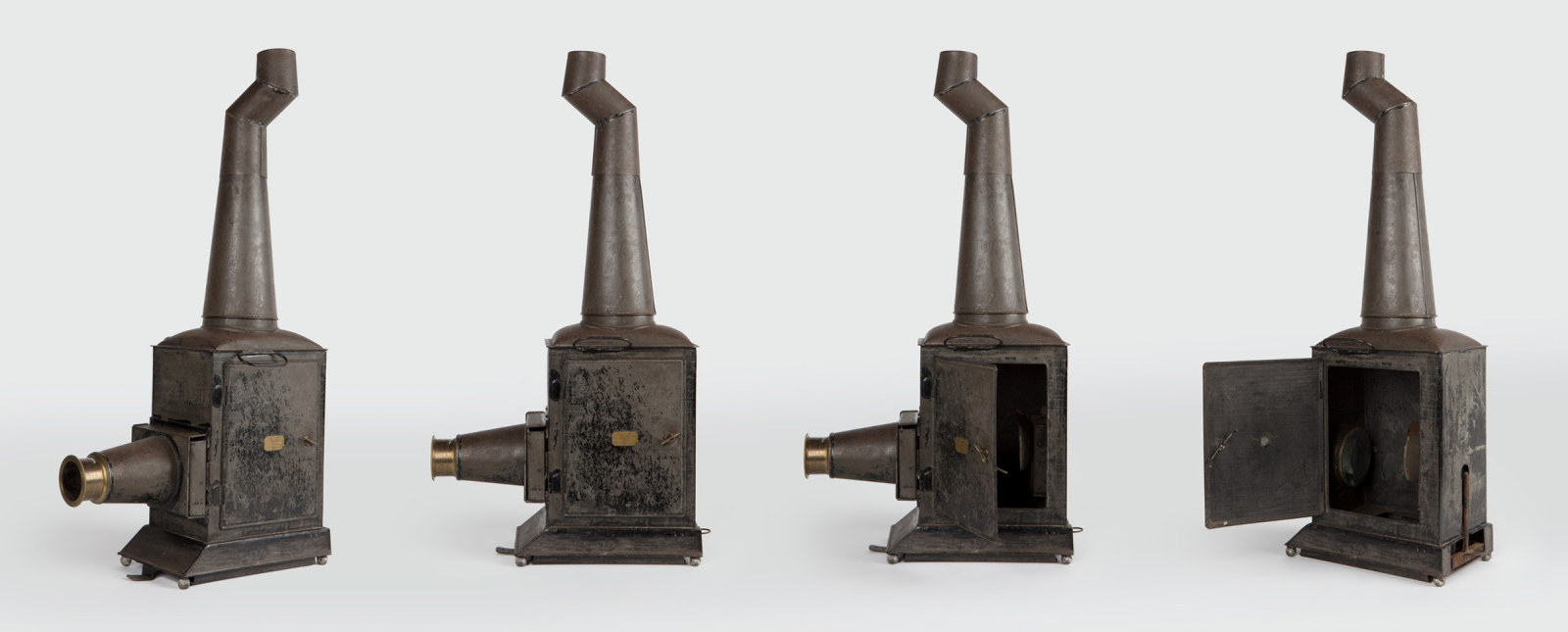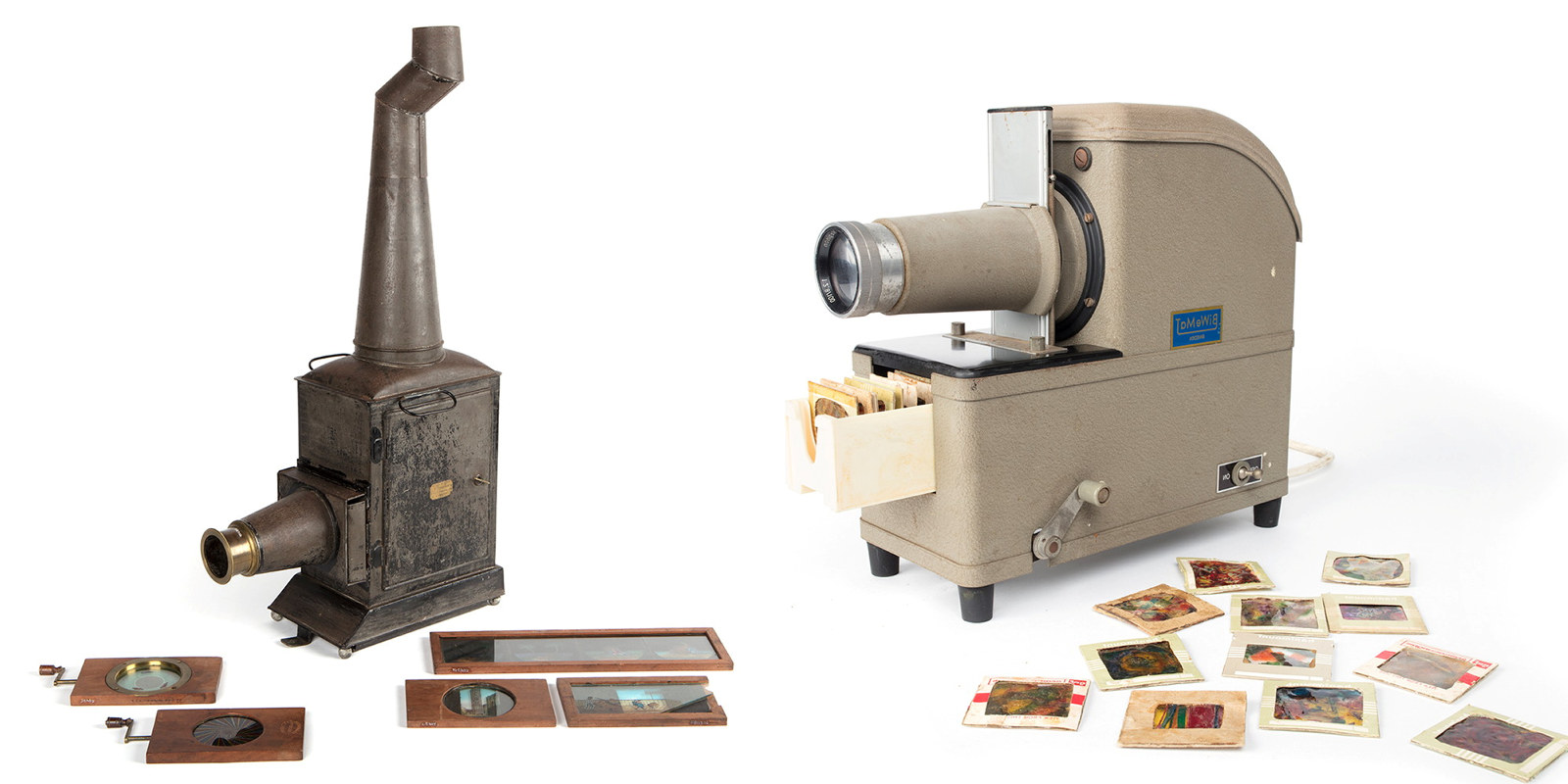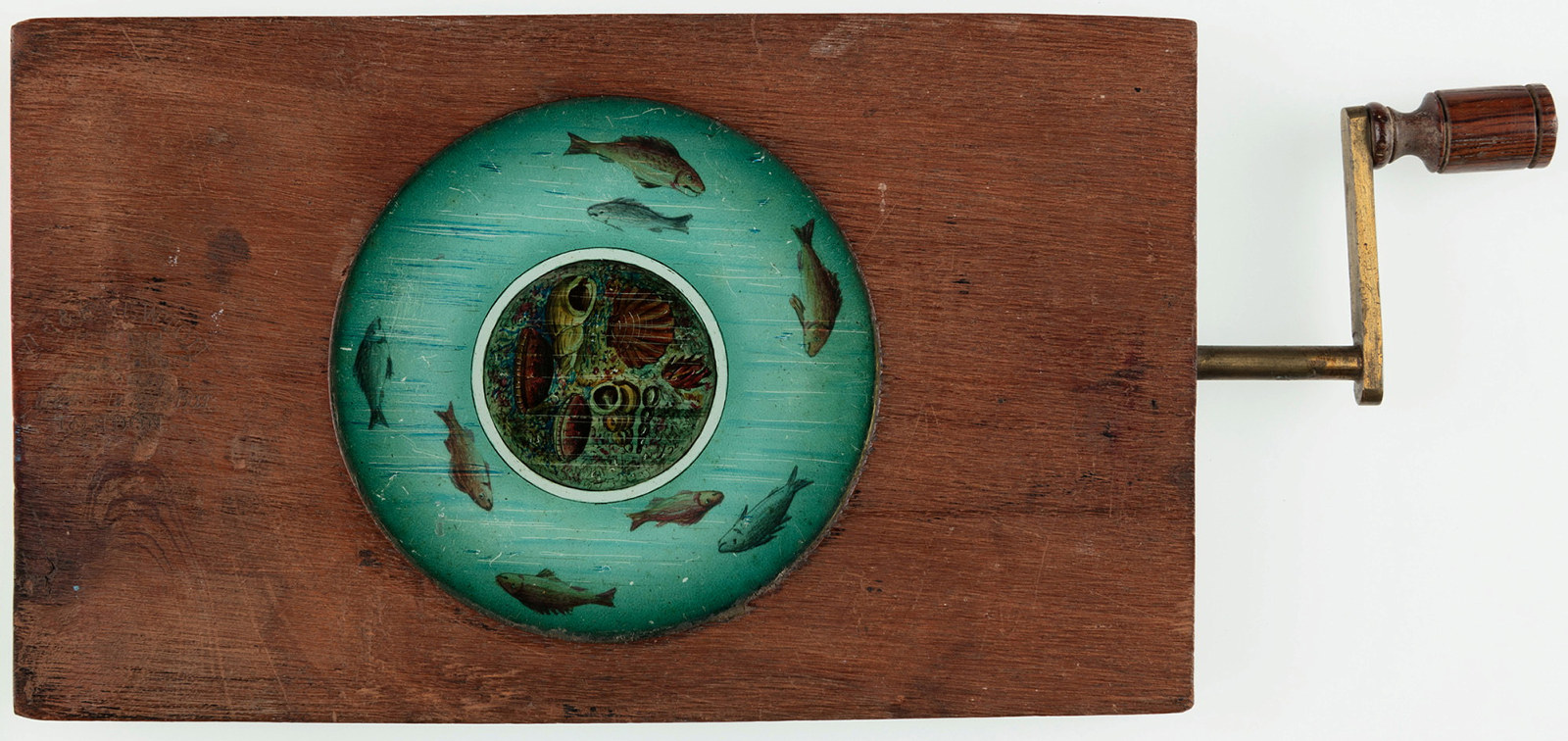Newton & Co’s ‘Improved Phantasmagoria Lantern’
The magic lantern at Rouse Hill Estate was manufactured by Newton & Company, Opticians, Scientific Instruments and Globe Makers of Fleet Street, Temple Bar, London.
It was model no. 2 of Newton’s range of ‘Improved Phantasmagoria Lanterns’, made of black japanned tin, fitted with an argand lamp and reflector, a brass focusing tube and a 3½” diameter lens able to show a picture 9ft in diameter.
It can be dated to the 1850s-1860s based on the evidence provided in a sheet of printed directions for use pasted inside the lid of the lantern’s timber carrying case. This sheet includes the citation of a prize medal awarded to Newton & Co at the Great Exhibition of 1851. Later models came with instruction sheets reporting successively the addition of medals and honourable mentions from the London International Exhibition of 1862, the Akola (India) Industrial Exhibition of 1868, the Paris Exhibition of 1878 and so on. The evidence thus suggests that the Rouse Hill lantern was acquired pre 1863.
The Rouse Hill lantern cost 3 guineas in the 1860s and was the model recommended for schools and lectures. A lantern in a polished mahogany body came at twice the price. The lantern was lit using sperm whale oil with powdered camphor dissolved in the oil over a gentle heat to ‘add greatly to its brilliancy’.
Once lit, and the lantern positioned before a screen, slides were placed in a carrier in front of the lantern, their projection usually accompanied by a narration of some kind.
The phantasmagoria lantern and its parts
About the authors
Megan Martin
Former Head, Collections & Access
Megan is the former head of Collections & Access at Sydney Living Museums. She has a particular interest in the working of the historical imagination, in teasing out the meanings of objects in museums collections and in crafting the stories that can be recovered/discovered through a close reading of those items of material culture.
Holly Schulte
Curator Digital Assets
Holly is the Curator Digital Assets with Museums of History NSW where she is part of the Collections & Access team.
Magic Lantern

Magic lantern at Rouse Hill Estate
The Rouse Hill House magic lantern is a mid-19th century example of a form of image projector which dates back to the 17th century
Published on
Related
Browse all
Magic lantern at Rouse Hill Estate
The Rouse Hill House magic lantern is a mid-19th century example of a form of image projector which dates back to the 17th century

Projected across time
In the late 1960s, John Terry, then a young man living at Rouse Hill Estate, composed avant-garde music which he set to abstract projected images, and performed at various locations in Sydney

Animated comic sliders for magic lantern
The magic lantern was a popular entertainment technology in the 19th century used to project stories and comic scenes.